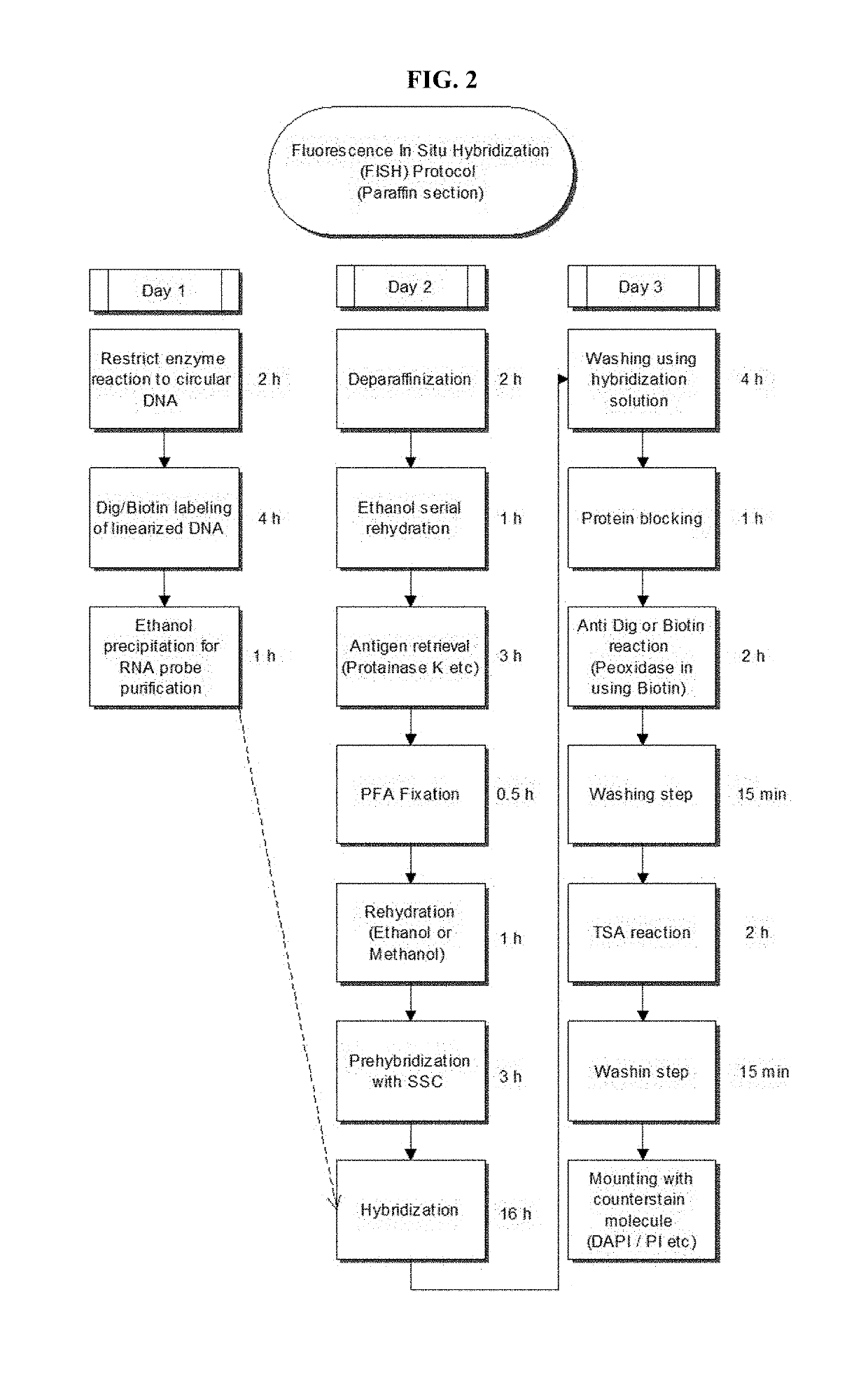Graphene nanosensor for detecting target RNA
- Summary
- Abstract
- Description
- Claims
- Application Information
AI Technical Summary
Benefits of technology
Problems solved by technology
Method used
Image
Examples
example
[0099]Experimental Material and Method
[0100]Synthesis of Fluorescent Probe
[0101]A probe coupled to a target RNA was synthesized in a peptide nucleic acid (PNA) form by Panagene Inc. (Republic of Korea) in order to increase chemical and biological stabilities. The synthesized probe sequence was GGTCTTTTTGTTATTTTGTCTT (FAM-PNA-BC1-1, SEQ ID NO: 2) and TTCTGTTTTATTGTTTTTCTGG (FAM-PNA-scr1, scramble, SEQ ID NO: 3). All probes were synthesized in a form in which an O-linker spacer is added to an N-terminal and then a fluorescent dye, FAM, is linked to the same.
[0102]Synthesis of Graphene Oxide (GO)
[0103]The graphene oxide was prepared so as to have a uniform size of 50 to 100 nm through screening.
[0104]Quenching of Fluorescent Probe
[0105]Conditions for quenching a fluorescent probe are as follows: after adding 40 pmol of fluorescent probe as well as 0.4 μg of graphene oxide and pouring 0.01M Tris-HCl buffer (pH 7.4) to prepare a solution in a total volume of 100 μl, the solution was subj...
PUM
| Property | Measurement | Unit |
|---|---|---|
| Thickness | aaaaa | aaaaa |
| Mass | aaaaa | aaaaa |
| Mass | aaaaa | aaaaa |
Abstract
Description
Claims
Application Information
 Login to View More
Login to View More - R&D
- Intellectual Property
- Life Sciences
- Materials
- Tech Scout
- Unparalleled Data Quality
- Higher Quality Content
- 60% Fewer Hallucinations
Browse by: Latest US Patents, China's latest patents, Technical Efficacy Thesaurus, Application Domain, Technology Topic, Popular Technical Reports.
© 2025 PatSnap. All rights reserved.Legal|Privacy policy|Modern Slavery Act Transparency Statement|Sitemap|About US| Contact US: help@patsnap.com



